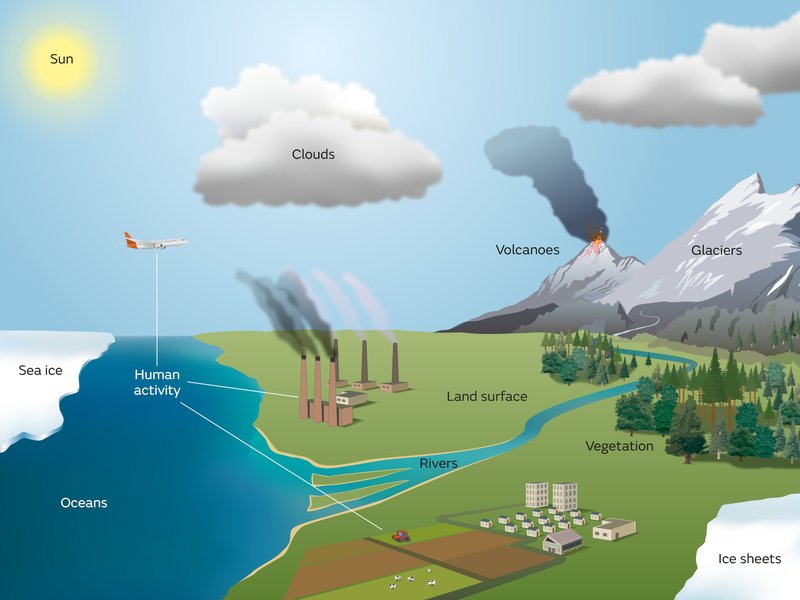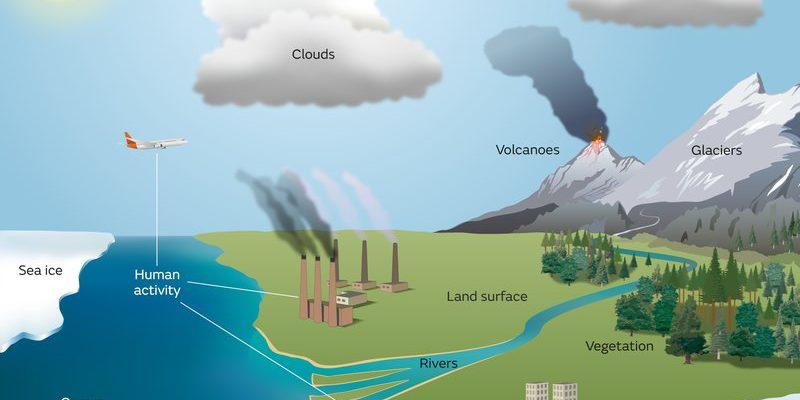
Bottlenose dolphins are known for their playful antics and intelligence, making them a favorite among marine enthusiasts and casual beachgoers alike. However, these friendly creatures are more than just entertainers; they play a crucial role in their ecosystem. As we explore how climate change impacts them, let’s take a closer look at their world and the challenges they face.
Understanding Bottlenose Dolphins and Their Habitat
Bottlenose dolphins are found in warm, shallow waters worldwide, often living in coastal areas and estuaries. They thrive in environments rich in fish and other marine life, relying on these ecosystems for food and shelter. Think of their habitat like a bustling city, where every resident plays a part in the community’s health. But just like any city, environmental changes can disrupt that balance.
Dolphins are highly social creatures, often seen swimming in pods. These groups help them hunt, protect each other from predators, and even raise their young. However, as climate change alters temperature and salinity levels in their environments, it disrupts the availability of food sources. If the “restaurants” they rely on close down, that can lead to serious challenges for these dolphins.
Temperature Changes and Dolphin Behavior
You might be wondering how temperature impacts dolphins. Well, just like humans, dolphins have a preferred climate. They thrive in water temperatures between 60°F and 80°F (15°C to 27°C). As climate change raises ocean temperatures, dolphins may be forced to swim farther in search of cooler waters. This change can affect their migratory patterns and breeding behaviors.
With rising temperatures, the food supply can also shift. Fish species that dolphins eat may leave their usual spots, leading dolphins to spend more energy traveling longer distances to find meals. For example, if local fish populations move to cooler waters, bottlenose dolphins may struggle to keep up, which can lead to decreased nutrition and, ultimately, health issues.
Impact of Ocean Acidification
Another sneaky side effect of climate change is ocean acidification. As carbon dioxide levels rise, the oceans absorb some of that gas, making the water more acidic. This shift can harm marine life at all levels of the food chain. You might be thinking, “How does that even affect dolphins?” Well, when shellfish and other small creatures struggle to survive, it impacts the entire ecosystem, including dolphins.
The prey species that bottlenose dolphins hunt, like fish and squid, can be affected by changes in pH levels. If these species decrease in population, dolphins will have a harder time finding dinner. It’s like a chain reaction: if one link weakens, the whole system gets shaky.
Pollution and Its Effects on Dolphin Health
Climate change drives more than just temperature shifts; it often leads to increased pollution levels in our oceans. As storms become more frequent and intense, runoff from land carries chemicals, plastics, and other harmful substances into the sea. Imagine tossing trash into a stream; eventually, it all flows downstream, affecting everything along the way.
Bottlenose dolphins are especially vulnerable to pollution. They are top predators, meaning they are at the top of the food chain. Pollutants accumulate in their bodies over time, leading to health issues. Heavy metals and toxins can affect their immune systems, reproduction, and even behavior. When these dolphins become sick, it can have dire consequences for their populations.
Climate Change and Habitat Loss
As sea levels rise due to melting glaciers and ice caps, coastal habitats where bottlenose dolphins often breed and nurse their young are at risk. Imagine your favorite beach disappearing underwater. For dolphins, habitat loss means fewer safe places to give birth and raise their calves.
Wetlands and estuaries serve as nursery grounds for many fish species. If these areas are submerged, it can disrupt the entire food web. Without these crucial habitats, dolphin populations might decline, affecting their long-term survival.
Conservation Efforts and What You Can Do
While the challenges are daunting, there’s hope. Many organizations are working tirelessly to protect bottlenose dolphins and their habitats. Efforts range from reducing pollution to advocating for sustainable fishing practices. Community clean-up days and initiatives to reduce plastic use are great ways for individuals to contribute, too.
One simple action you can take is to support marine conservation organizations. Whether it’s through donations, volunteering, or spreading awareness, every little bit helps. If you have the opportunity to reduce your carbon footprint, remember that every step counts in the fight against climate change.
How Climate Change Affects Dolphin Populations: The Bigger Picture
You might be thinking, “Why should I care about bottlenose dolphins?” Here’s the thing: the health of dolphin populations is an indicator of the overall health of our oceans. They reflect the state of marine ecosystems. When dolphins thrive, it often means that their ecosystems are balanced and healthy, benefiting a wide range of marine life, including humans.
By addressing climate change, we contribute not only to the survival of bottlenose dolphins but also to the well-being of countless other species and the health of our planet. It’s a ripple effect—what we do today impacts the world tomorrow.
In summary, climate change poses significant threats to bottlenose dolphins, from temperature changes and habitat loss to pollution and food shortages. However, by understanding these challenges, we can take action to help protect these wonderful creatures for future generations. Let’s work together to ensure that our oceans remain vibrant and full of life.

